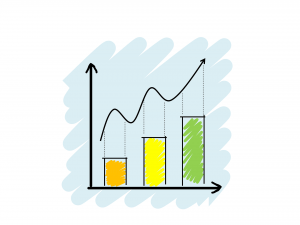Investment … to put money to use;
financial products are something you buy or put your money into to get a profitable return;
such as compound interest products.


The simplest way to save is to put a sum of money aside and continue adding to it periodically. However, money saved in this way is not being put to use and it is not earning interest.
Beyond saving there is investment where money is used in such a way that there will be more in the future for use.

Investments make a difference in the quality of life and in retirement when added to the social security pension income.
Most people choose from four main types of investment, known as ‘asset classes’:
o Shares – you buy a stake in a company.
o Cash – the savings you put in a bank or building society account.
o Property – you invest in a physical building, whether commercial or residential
o Fixed interest securities (also called bonds) – you loan your money to a company or government.
There are other types of investments available including:
o Foreign currency.
o Collectibles, such as art and antiques.
o Commodities like oil, coffee, corn, rubber or gold.
o Contracts for difference, where you bet on shares gaining or losing value.
o Bitcoins and cryptocurrencies.
o Initial coin offerings.
o Dividends (from shares).
o Rent (from properties).
o Interest (from cash deposits and fixed interest securities).
o The difference between the price you pay and the price you sell for – capital gains or losses.
The truth is there is no such thing as a ‘no-risk’ investment. You are always taking on some risk when you invest, but the amount varies between different types of investment.
Money you place in secure deposits such as savings accounts risks losing value in real terms (buying power) over time. This is because the interest rate paid would not always keep up with rising prices (inflation).
On the other hand, index-linked investments that follow the rate of inflation do not always follow market interest rates. This means that if inflation falls you could earn less in interest than you expected.
Stock market investments might beat inflation and interest rates over time, but you run the risk that prices might be low at the time you need to sell. This could result in a poor return or, if prices are lower than when you bought, losing money.

- A good start: low risk investments, adding medium risk investments if you are ready to accept higher instability.
- Do not go for high-risk products unless you fully understand their risks and are comfortable to take them on.
- Always spread your risk by putting your money into a number of different products and asset classes. That way, if one investment does not work out as you hoped, you have others to fall back on. This is called ‘diversifying’.


